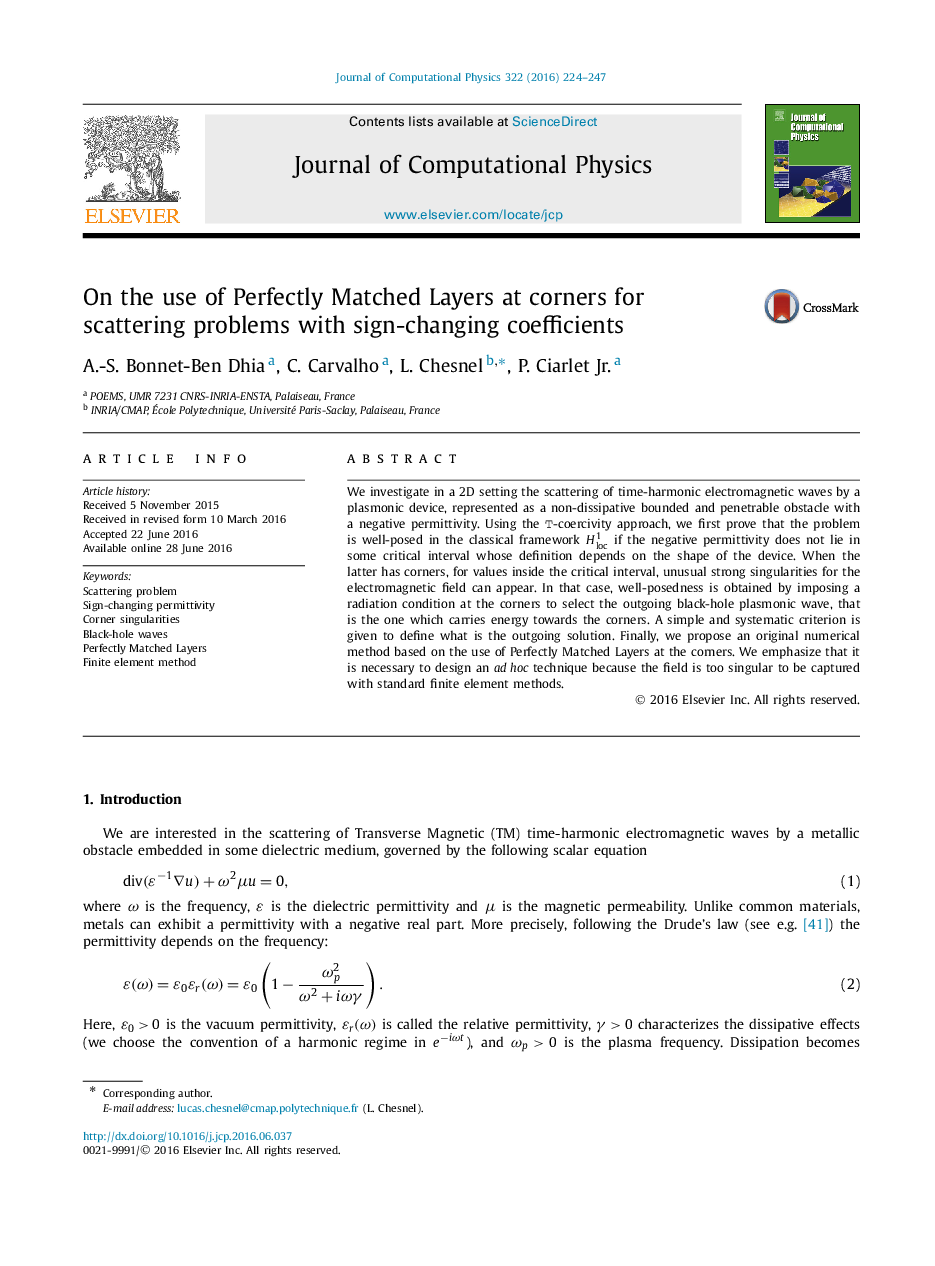| Article ID | Journal | Published Year | Pages | File Type |
|---|---|---|---|---|
| 6929554 | Journal of Computational Physics | 2016 | 24 Pages |
Abstract
We investigate in a 2D setting the scattering of time-harmonic electromagnetic waves by a plasmonic device, represented as a non-dissipative bounded and penetrable obstacle with a negative permittivity. Using the T-coercivity approach, we first prove that the problem is well-posed in the classical framework Hloc1 if the negative permittivity does not lie in some critical interval whose definition depends on the shape of the device. When the latter has corners, for values inside the critical interval, unusual strong singularities for the electromagnetic field can appear. In that case, well-posedness is obtained by imposing a radiation condition at the corners to select the outgoing black-hole plasmonic wave, that is the one which carries energy towards the corners. A simple and systematic criterion is given to define what is the outgoing solution. Finally, we propose an original numerical method based on the use of Perfectly Matched Layers at the corners. We emphasize that it is necessary to design an ad hoc technique because the field is too singular to be captured with standard finite element methods.
Related Topics
Physical Sciences and Engineering
Computer Science
Computer Science Applications
Authors
A.-S. Bonnet-Ben Dhia, C. Carvalho, L. Chesnel, P. Jr.,
